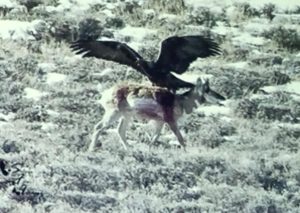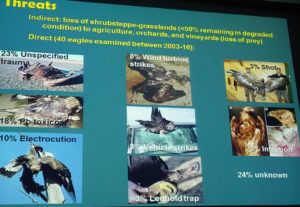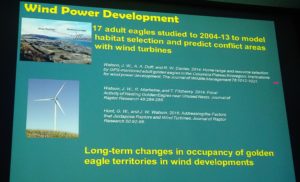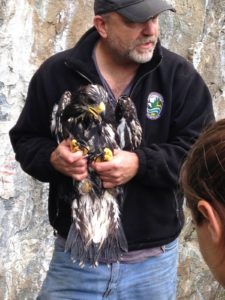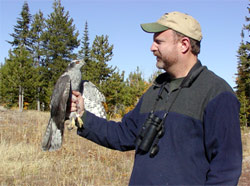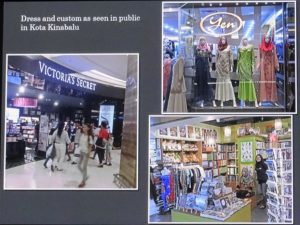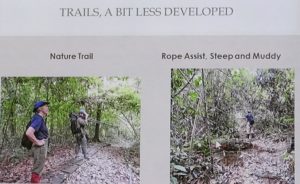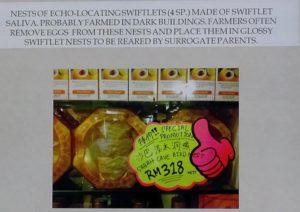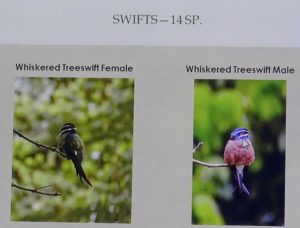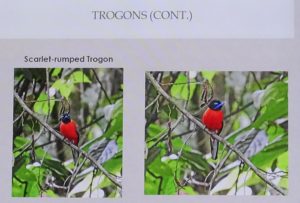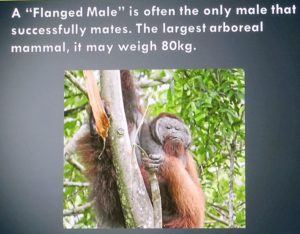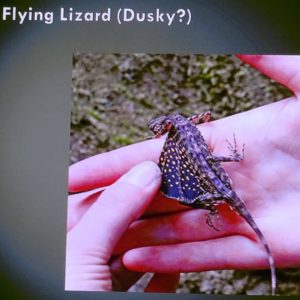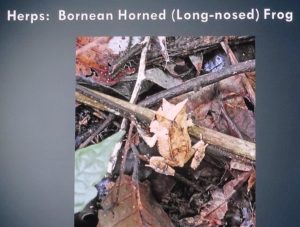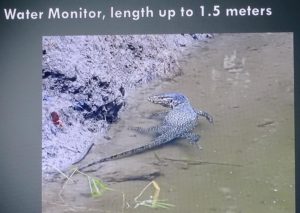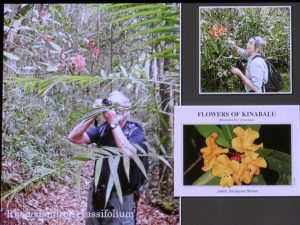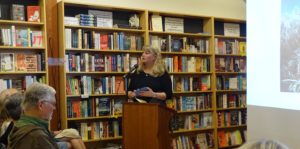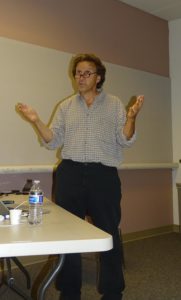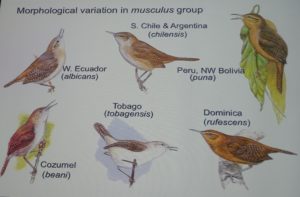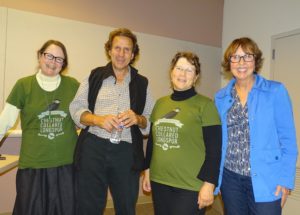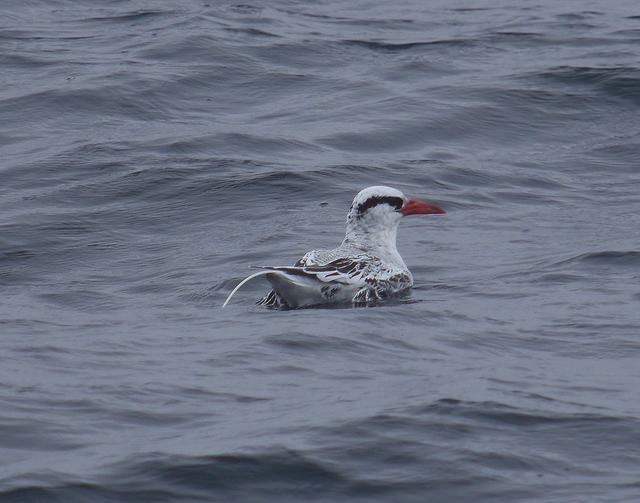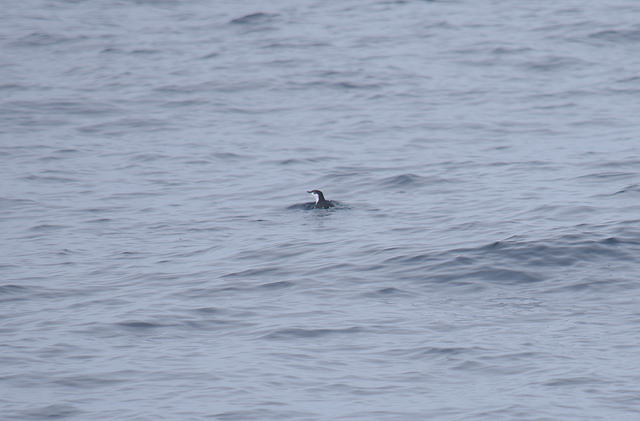Feb 21, 2016 – Virtual ecotour of the Svalbard Archipelago, 6:45 PM, University Place Library.
Category Archives: General Interest
JIM WATSON PRESENTATION TO ABC ON GOLDEN EAGLES, NOV 29, 2016
GOLDEN EAGLES OF WASHINGTON – POPULATION STATUS, ECOLOGY, & THREATS
Jim Watson, raptor researcher for the Washington Department of Fish and Wildlife, educated ABCers on November 29, 2016, about one of our most iconic avian raptors, the Golden Eagle.
First Jim covered the lore of this worldwide species, covering the gamut from love to hate, victim to villain. Myths about Goldens carrying off humans and large livestock much heavier than the their carrying capacity were dispelled, as well as other beliefs. Although they can kill large prey, they can’t carry it off. That story of the eagle taking all day to kill one weakened pronghorn was especially interesting.
Distribution across our state was interesting, since most of us only see this bird in eastern Washington. The Olympics and San Juans have continuing small populations, though seldom seen.
Using much of his own original research, Jim covered the alarming decreases in populations, especially in adult raptors in a species that takes at least 5 years to reach reproductive age. Official population statistics treat immatures and adults the same, so can be misleading about the condition of the species since they treat “normal” losses of young birds as equivalent to the dire losses of successful adults. With populations at historic lows in Washington, Jim had numbers for us on threats: Unspecified trauma (23%), lead poisoning (18%), electrocution (10%, perhaps lessening), wind turbines (8%, definitely increasing), etc. Shooting deaths still happen, but are slowly decreasing (3%). Jim gave actual mechanisms of lead poisoning on the isotope level for both direct ingestion and ingestion of poisoned prey. Wildfire has not been proven to significantly impact the birds, perhaps actually improves their ability to find prey sometimes, although this manifestation of a warming world needs to be watched.
The wind turbine story is disheartening, as wind farms tend to be erected along the same air current corridors that raptors use for lift, migration, etc. Many wind farms were licensed before there was any research available. Most licenses are for 30 years, so in Washington a lot more birds will die. There is much evidence of wind farm people downplaying raptor deaths, as well as passerine and bat mortality. Jim has been involved in much of the original research including 3 papers which studied 17 Golden Eagles in Washington from 2004 to 2013 near wind turbines. Regulations about placement of turbines near known nests fail to take into account the slopes and ridges that eagles need to fly, which we were able to enjoy in 3-D animations that Jim’s team had made. This topic really caught the attention of the ABCers, and there was some discussion of European model turbines which are much more benign and that the current industry in the U.S. may be too entrenched in its own more destructive models.
It was interesting to find that a few of these immature birds do travel, some south, some north, but usually do return to their birthplaces to settle down and raise their families. The adults in Washington are sedentary, however. Goldens have proved to be adaptable as to diet in this state where their favorite food, rabbit, has dwindled. Marmots are now 23% of their diet, deer fawns 13%, upland birds 12%, and coyote pups 8%.
Jim finished up with a fun “quiz” to help dispel the gloom and doom about these beautiful birds.
Jim also recommended the Smartphone app, Raptor ID, from Hawkwatch International. You can get it for iPhone or iPad from the iTunes marketplace and now for Android from Google Play. $9.99.
Thanks, Jim Watson, for sharing your knowledge with us and leaving us hungering for more. It’s reassuring to us to know that people like you are out there actually working on the problems we know exist.
NOV 29, 2016 – James Watson Presents Golden Eagles of Washington: Population Status, Ecology, and Threats
GOLDEN EAGLES!!
Tuesday, November 29, 2016, 6:45 PM, Pierce County Library Administration Bldg, 3005 112th Street East, Tacoma, WA 98446-2215, near Hwy 512 & Waller Rd. All are welcome. $10. Honorarium
ABC (Advanced Birding Club) and Tahoma Audubon welcomes James Watson, raptor expert with the Department of Fish & Wildlife. James Watson will tell us the latest on Golden Eagles in Washington.
Ironically, recent interest in North America’s other eagle, the Golden Eagle, stems from impacts on this species from green energy development. Yet throughout history the species has continued to survive human interaction from their prized value and use in Native American cultures, large scale aerial gunning and poisoning in the mid-20th century, and ongoing impacts from electrocution and lead poisoning. Join us as we explore what current research reveals about natural history of Golden Eagles in Washington including population dynamics, aspects of breeding and wintering ecology, and major threats potentially limiting the future population. Bring your questions, whether related to field identification or weight-lifting capacity of an eagle, and we’ll attempt to “de-myth” their secretive lifestyle.
Jim Watson is a Wildlife Research Scientist with the Washington Department of Fish and Wildlife (WDFW) and the lead researcher for statewide raptor studies. He has spent the past 40+ years studying raptors in the western United States and abroad. Jim’s research focus includes raptor population dynamics, migration ecology, and management of raptors in human landscapes. His recent work evaluates impacts of wind energy and lead contaminants on golden eagles and ferruginous hawks. Come join us for this special presentation.
ABC WELCOMES JERRY BROADUS & CLARICE CLARK ON BORNEO, Oct 24, 2016
BORNEO BIRDBANDING WITH JERRY & CLARICE, 10/24/16
Jerry Broadus and Clarice Clark went birdbanding in Borneo and joined long-time friend and Morse Preserve bander, Suzanne Tomassi, who is running a 10-year study and banding project in the Danum Valley in northern Borneo, an unforgettable and remote area with perhaps the oldest rainforest in the world with many species still unrecorded by Science. They were there through SEARRP (South East Asia Rainforest Research Partnership http://www.searrp.org/) and Suzanne’s group, the Borneo Rainforest Project.
Suzanne has a fundraising website for the Borneo Rainforest Project wtih an entertaining video that you should watch — both to understand what they need and for the sheer enjoyment of vicariously visiting the place, as we did with Jerry and Clarice. If you send in any amount to them through INDIEGOGO, they will give you a token gift that you couldn’t get anywhere else: https://www.indiegogo.com/projects/borneo-rainforest-project#/backers
Jerry and Clarice vividly protrayed the highs (the birds) and the lows (leeches and bad trails with disappearing bridges and slimy mud) and the interesting facilities and accommodations. It’s not the Ritz (though the only other place you can stay in the vicinity is — the very expensive Borneo Rainforest Lodge). They also talked about the available bird books with their competing sets of Latin names for the birds. With all the photos they took, Jerry and Clarice practically made a new field guide, judging by the many great slides they showed us.
Concerning bird stories they told us concerned Hornbills (the Chinese have now turned to Hornbills’ bills since Rhino horns have become so hard to obtain) and Swifts with edible nests, now “farmed” and sold in grocery stores.
They recommended if you hire guides to be sure to get the Sticky Rice Guide Service for real birders. Other “guides” available are only there to keep you from getting lost, but not to help in any other way.
Banders are forging new territory, as there nothing like the Pyle guides to help them catalog what they’re banding. They take blank bird drawings and fill them in as they go along, basically making the banding guide as they go.
Other great birds they interacted with included Kingfishers and Trogons and many many more! It was interesting to hear that Kingfishers just lie still for banding as long as they’re on their backs.
It’s not just birds in Borneo! Insects, reptiles, and mammals were everywhere! The logo of SEARRP is one of those unforgettable tiny Tarsiers (pause for people to say “aaaahhh!”). And Orangutans are the critters most people think of when they think of Borneo, and they deserve some thought and protection.
Botanists go crazy there, too! Of course there were plenty of Clarice’s favorites, native Rhododendrons (check out her bumpersticker), including Vireyas, among others. Some of these rhodies are actually epiphytes, and many of them dangle from trees above the trail. Of interest was that many trees have smooth bark (koompassias, for example), which protect the trees and nesters from climbing vines. Eyecatching Durian fruit are loved by Orangutans and people, but are outlawed in hotel rooms due to a lingering odor.
Clarice always likes to end her presentations with a diabolical quiz, but this time it was like no other. She wasn’t trying to catch us or teach us, but rather she was hoping WE could help HER identify a bird! She and Jerry have a difference of opinion what it could be, and the references available differ widely in possible plumages. I’m afraid we didn’t give them a definitive answer. Hey, it COULD be a bird not previously described to Science, even though it did appear just outside the dining hall…
Book event 9-27-16: The Hidden Lives of Owls
Kitsap Author Leigh Calvez will discuss her new book, The Hidden Lives of Owls, tomorrow night (Sept 27) at The Tacoma Library, sponsored by King’s Books in Tacoma at 7 PM. For more info: http://www.kingsbookstore.com/event/owls.
Several of us had already heard her talk about The Hidden Lives of Owls and sign it when she appeared at Eagle Harbor Books on Bainbridge, her home base, on 9/15/16, as well as having heard her speak about it pre-publication at the WOS conference this year. That event in Bainbridge was an overflow crowd that included many of her friends including Washington owl expert Jamie Acker.
Leigh Calvez’s (pronounced Cal-VAY) previous history is as a naturalist studying marine mammals. This seeming stretch to owls came about slowly until one day she realized she was obsessed with owls and needed to follow that obsession. As a naturalist, she knew it would take expert guidance, and she also knew how to find those experts and cajole them into bringing her along. The resultant book is therefore a combination of the most up-to-date knowledge on several critical species as well as a personal odyssey. She didn’t just interview the experts — She went with them. She experienced the same cold, wet, dark, afraid-to-breathe, long and sometimes boring stakeouts and now knows how hard it is to study owls first-hand.
Spotted, Great Grays, and Flammulated Owls are among the hardest to find and are covered in the book with a sense of adventure, as well as many others.
Line drawings by noted local bird artist Tony Angell are added for each species, in a more whimsical style than he usually employs, somewhat reminiscent of his own recent owl book, The House of Owls (thanks for loaning this to me, Vera!).
This is an easy-to-read book that will leave you educated effortlessly as you hurry to turn the page.
By the way, Eagle Harbor Books on Bainbridge will be hosting Paul Bannick on October 30th 4-5 PM when his new book, OWL, comes out. His photographic study will be a good companion book to Leigh Calvez’s book.
JOHN KLICKA AT ABC! 9/22/16
JOHN KLICKA AT ABC! 9/22/16
ABC welcomed Burke Museum curator of birds and intense researcher, John Klicka, on September 22nd. The new director of Tahoma Audubon, Emily Kalnicky, was also introduced to the group by TAS president (and noted birder/bander) Jerry Broadus. We are happy she made her debut public appearance to the birders!
Professor Klicka is a dedicated researcher with very specific points of view on recent taxonomy work on birds due to his personal hands-on research. After Kay Pullen asked him to tell us about the changes going on at the Burke (all new facilities in new building!), he was eager to show us what he has been up to, studying genomes of House Wrens and other birds and discovering temporal, geographical, and geological connections, some of which was very surprising!
Before getting down to the specifics of the House Wren, Prof Klicka touched on how modern technology has discovered major diet changes (smaller prey) in the Marbled Murrelet that may be as important, or more so, than habitat loss. This was possible through the specimens collected over a hundred years ago looked at with new technology. Thus, specimens collected now by the museum may seem more important at some unforeseen time in the future, making growing and preserving museum collections their #1 purpose. #2 and #3 are the obvious purposes of education and research.
A discussion of genetic mutations followed with numerous examples, the most “colorful” of which was Trogon species color differences. Doing the molecular analysis shows that it is the head/breast hue and not the belly color that distinguishes different clades (descendants of the same ancestor). The other fascinating finding is that there is a molecular clock, which shows within 2% in millions of years when two descendants diverged.
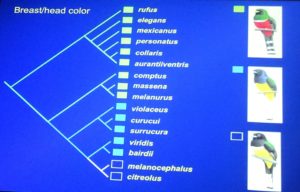
Molecular research found that it was the head/breast color, not the belly, that was species-related.
That molecular clock leads directly to the profound theory of the Great American Interchange — the period of time when species from the north pioneered south and vice versa. It turns out that there is much correlation here with the point 3-1/2 million years ago when the Panama isthmus filled in. Even though birds can fly, they apparently still want to see the land below them when they move their households.
Troglodytes aedon might really be a bunch of different species spread throughout the Americas including some strange strains endemic to small islands off the north coast of South America. They are of temperate origin, but once pioneers cleared that isthmus, they radiated enthusiastically and now live in every corner of South America. Of the 75 Troglodytes species, 45 now inhabit the southern continent.
An even more extreme case is the true Tanagers, of which all 413 species crossed that Panamanian landbridge from the north and never looked back. One of the ah-hah moments was realizing that once they’ve tasted the tropics, they never want to leave. The reverse is rare.
Thanks, Professor Klicka for a peek into molecular taxonomy! We are discussing visiting your museum in 2017 and look forward to seeing you again.
San Diego Deep Water Pelagic on the Searcher
I got home yesterday from a 5-day pelagic trip out of San Diego on the 95-foot Searcher. I wrote a trip summary on my notes page. For anyone interested you can see the notes here:
San Diego Deep Water Pelagic Trip on Searcher
I felt the trip was exceptionally well organized, run and led. The ship is reasonably comfortable, the food outstanding, and overall I recommend the trip as an experience and as a way to see deep water SoCal specialties.
Nice Article on eBird NW on “Western Scrub Jays” by Bill Tweit
Check out the recent eBird NW article on scrub jays in the NW and possible ID confusion.
The Scrub-Jay world just became more complicated, and interesting
Coming October 2016 – Borneo Bird Monitoring!
OCT 24, 2016, 6:45 PM, UPlace Library: Borneo Bird Monitoring by Jerry Broadus & Clarice Clark!
Our own Jerry and Clarice spent three weeks recently in Sabah, Malaysia, Island of Borneo. The primary reason for the visit was to help with a 10-year project monitoring bird populations in old growth and secondary jungle rainforest. We helped with the project in the old growth area, the famous Danum Valley Conservation Area.
We stayed at the Danum Valley Field Station with the research staff and met with scientists from around the world working on projects such as carbon sequestration from the atmosphere. Danum Valley is one of the oldest rain forests still standing on earth. It houses several primates including Orangutans, reptiles such as Monitors, and species of birds such as you will never see in the Americas.
We spent some time helping with the project banding birds and some time birding with an excellent local guide. After leaving Danum we also birded (and botanized) in Kinabalu National Park.
This slide show will feature all three–primates, reptiles, and birds. We will show birds in the hand as well as in the bush. We will also show the terrain and forest types. You can expect a short “little brown job” quiz at the end.
Arizona Second Spring Trip Report
Ken and I just got back from Arizona and had a great trip. I posted notes on the trip on my birding notes page. link here.


